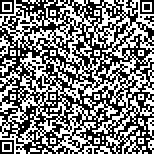| 摘要: |
| 2013 年4~6 月, 在室内采用实验生态学的方法进行了海湾扇贝(Argopecten irradias)和孔石莼(Ulva pertusavar)4 种配比模式的混养实验。各实验组扇贝密度均为48 只/m3, 孔石莼密度分别为55、121、255 和338g/m3。每周采样测定水体中营养盐(NH4-N、NO3-N、NO2-N、PO4-P)的含量及养殖生物的生长情况。扇贝与孔石莼的混养实验结果表明, 在养殖系统中引入孔石莼可以改善养殖环境, 扇贝和孔石莼的适宜混合比例为1︰ 1(贝肉湿质量: 藻类湿质量)能取得较好的生态效应。 |
| 关键词: 贝藻混养 海湾扇贝(Argopecten irradias) 孔石莼(Ulva pertusavar) |
| DOI:10.11759/hykx20140427001 |
| 分类号: |
| 基金项目:秦皇岛市科技计划项目 |
|
| Simulation of the polyculture ecosystem of scallop(Argopecten irradias) and kelp (Ulva pertusavar) |
|
|
| Abstract: |
| The polyculture of scallop and kelp was performed in laboratory by the means of experimental ecology during April to June in 2013, Polyculture systems of scallop (Argopecten irradias) and kelp (Ulva pertusavar) were divided into 4 groups. The scallop was reared at a density of 48 individuals/m3, and the kelp were cultivated at a density of 55 g /m3, 121 g /m3, 255 g /m3 or 338 g /m3. During the experiment, the variations of nutrients, survival and growth of the scallop and kelp were detected every 7 days. In conclusion, the polyculture of the A. irradias with the seaweed can produce reasonable ecological effects when their density is 1︰1. |
| Key words: polyculture Argopecten irradias Ulva pertusavar |
